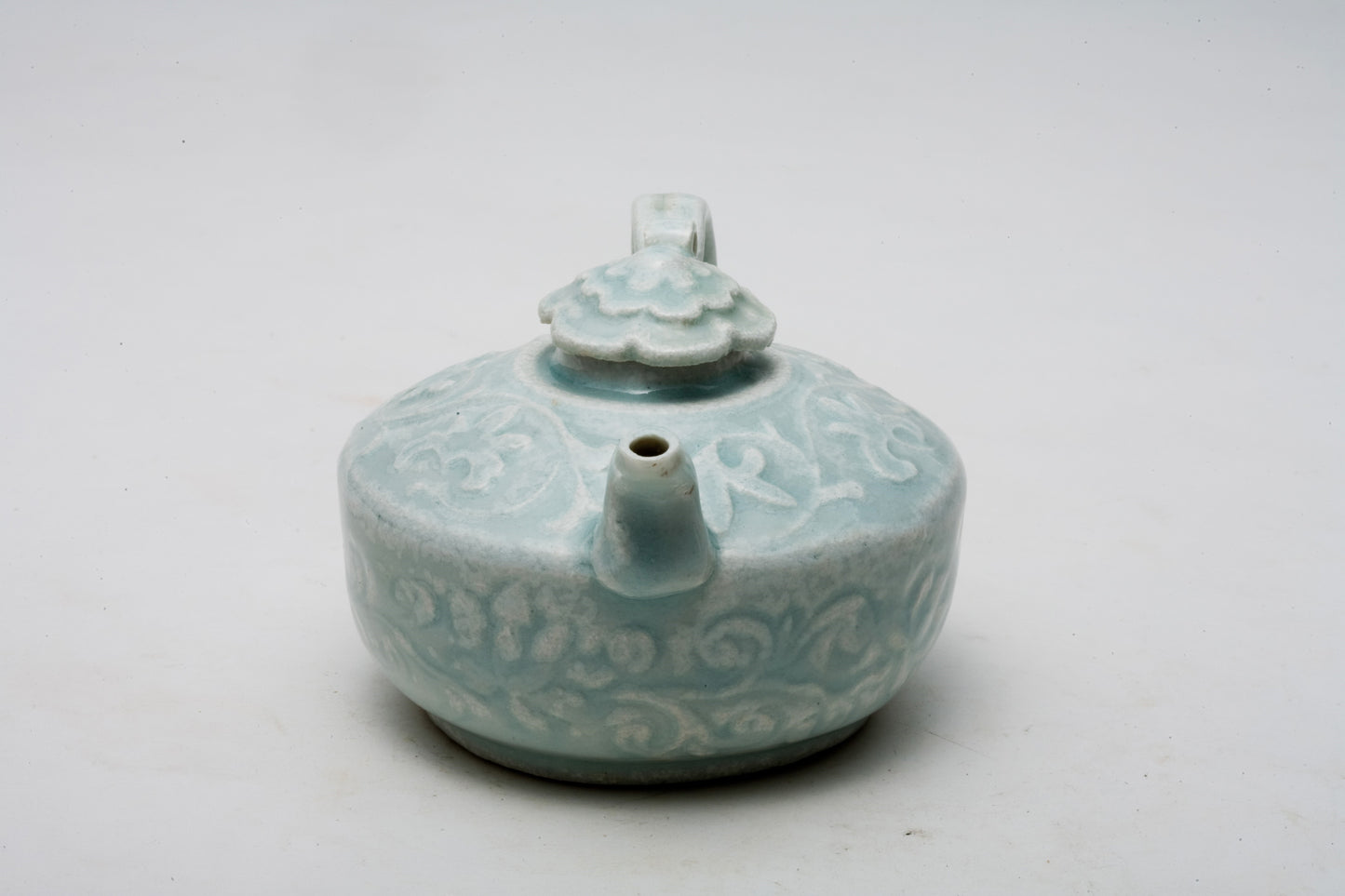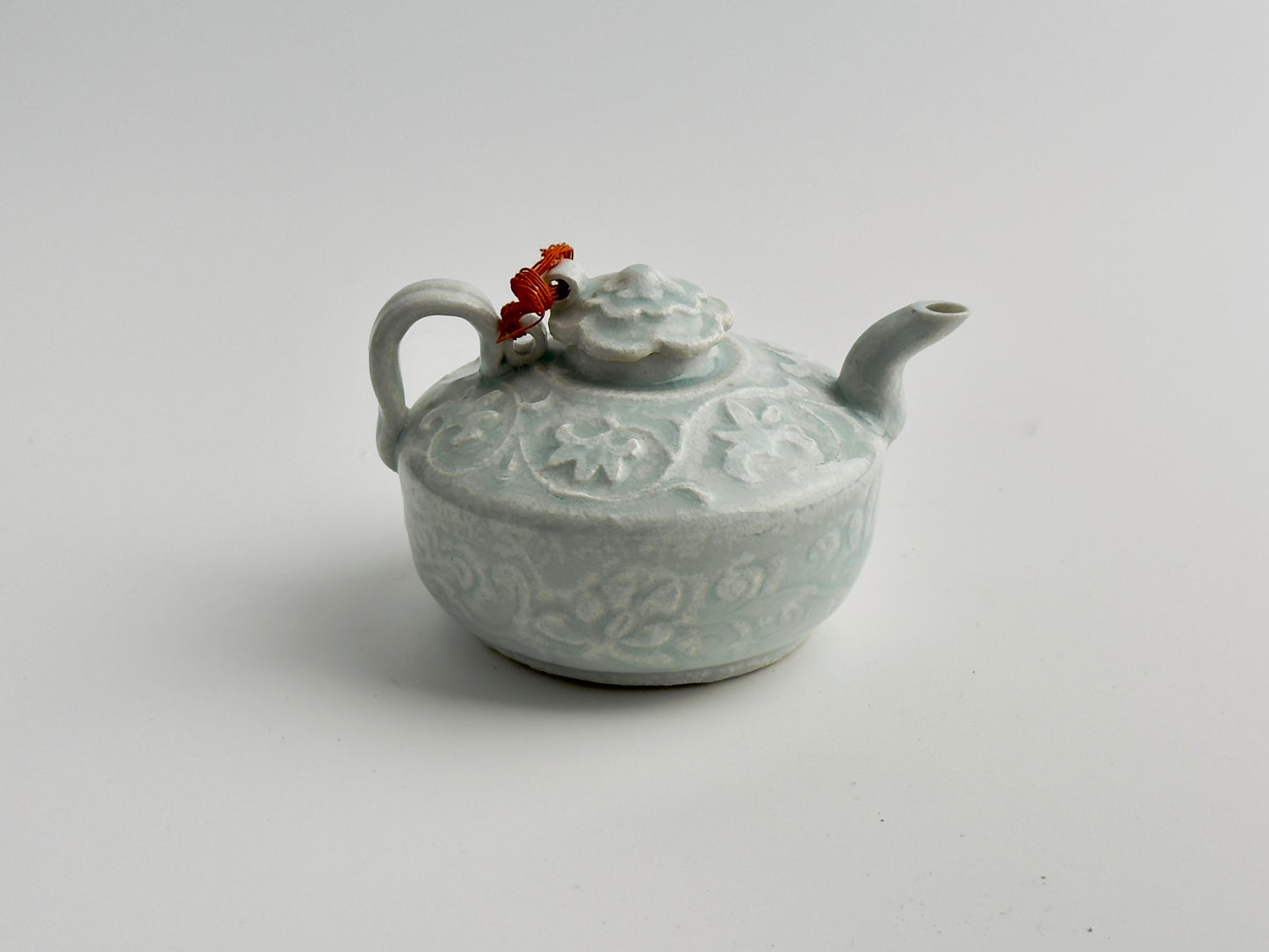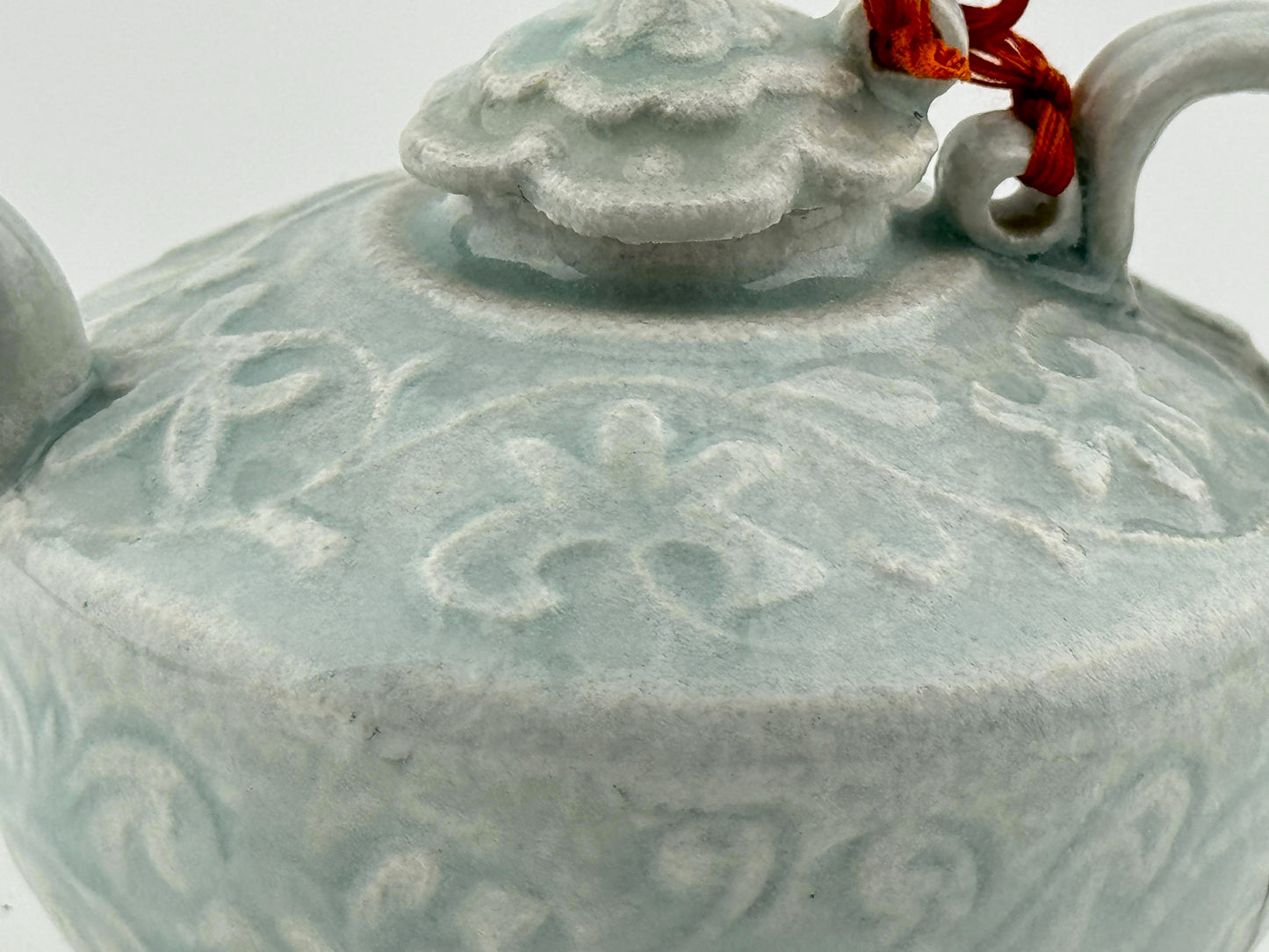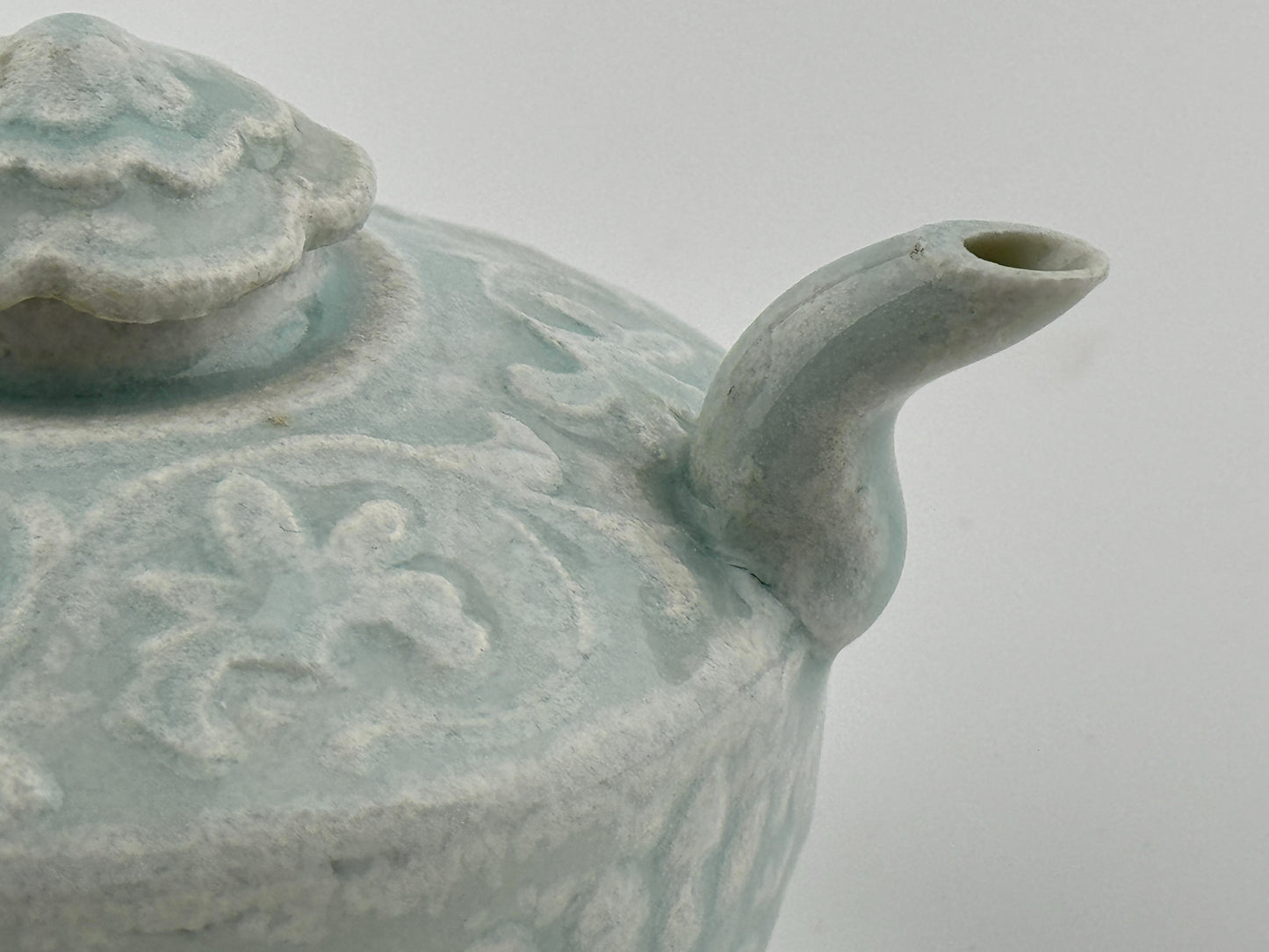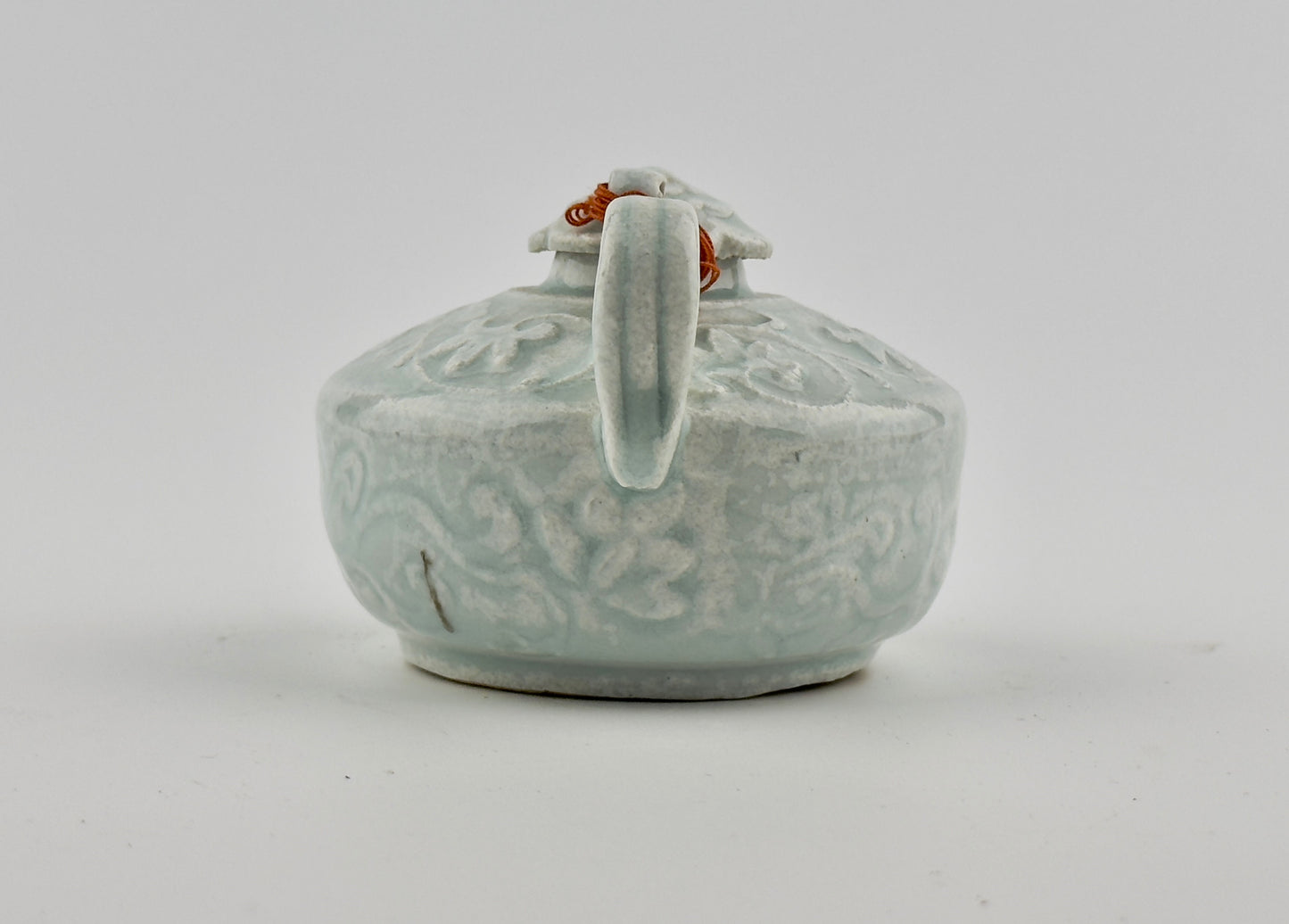Rare Qingbai Carved Ewer, Song-Yuan Dynasty
Rare Qingbai Carved Ewer, Song-Yuan Dynasty
Couldn't load pickup availability
This Qingbai ewer features a rounded body with smooth curves, a short spout, and a looped handle, presenting a harmonious and balanced form. The lid is adorned with a flower-shaped finial, which complements the overall graceful design of the piece.
The surface of the ewer is intricately decorated with shallow, symmetrical floral carvings. These delicate patterns are subtly revealed beneath the translucent glaze, a hallmark of Qingbai ware. The carving technique creates a soft and harmonious visual effect, blending seamlessly with the overall form of the ewer. The smooth, pale blue-green glaze enhances the elegance of the piece, reflecting the high level of craftsmanship and refinement typical of the period.
The first three photos and the remaining ones were taken by different photographers and cameras, so the tone may appear different.
Period : Song-Yuan Dynasty(13-14th century)
Type : Ewer
Medium : Qingbai Ware
Size : 7 cm(Height), 2cm(Mouth Diameter)
Provenance : Acquired in late 1990s from Hongkong
Condition : Excellent(Discoloration along a straight line on the lower part of the body)
Reference :
1) Sotheby's New York 17 March 2015 - Song Tradition: Early Ceramics From The Yang De Tang Collection - Lot 100 - A RARE 'QINGBAI' CARVED EWER YUAN DYNASTY
(Price Estimate : 20,000 USD - 30,000 USD / Type : Closely related)
https://www.sothebys.com/en/auctions/ecatalogue/2015/song-ceramics-yang-de-tang-collection-n09338/lot.100.html
* Qingbai Ware
Qingbai ware, which translates to "blue-white ware," is a type of Chinese porcelain that was made at the Jingdezhen and other kilns in the porcelain-producing regions of China, primarily during the Song dynasty (960–1279) and continuing into the Yuan dynasty (1271–1368). It is known for its translucent quality and the pale blue-green glaze that characterizes most of its pieces.
The qingbai glaze was achieved using a small amount of iron in a reduction-fired atmosphere, which produced the subtle blue-green tint. The body of qingbai ware is typically made of a fine, white porcelain that is often referred to as 'artificial jade' due to its resemblance to the esteemed stone. The thinness of the body and the high firing temperatures used contributed to the translucent quality of the finished product.
Qingbai ware includes a range of items such as bowls, cups, vases, and ewers. The designs are usually simple and elegant, with an emphasis on the graceful lines and form of the objects. Decorative motifs, when present, are often incised, carved, or molded in relief and can include floral patterns, dragons, phoenixes, and other symbolic elements drawn from Chinese culture.
Over time, the technology and techniques used to produce qingbai ware evolved, leading to innovations in glaze and decoration that would influence later types of Chinese porcelain. Despite these changes, qingbai ware remains a distinguished example of the potters' art in Song and Yuan China, reflecting the refined aesthetic and cultural values of the period.

